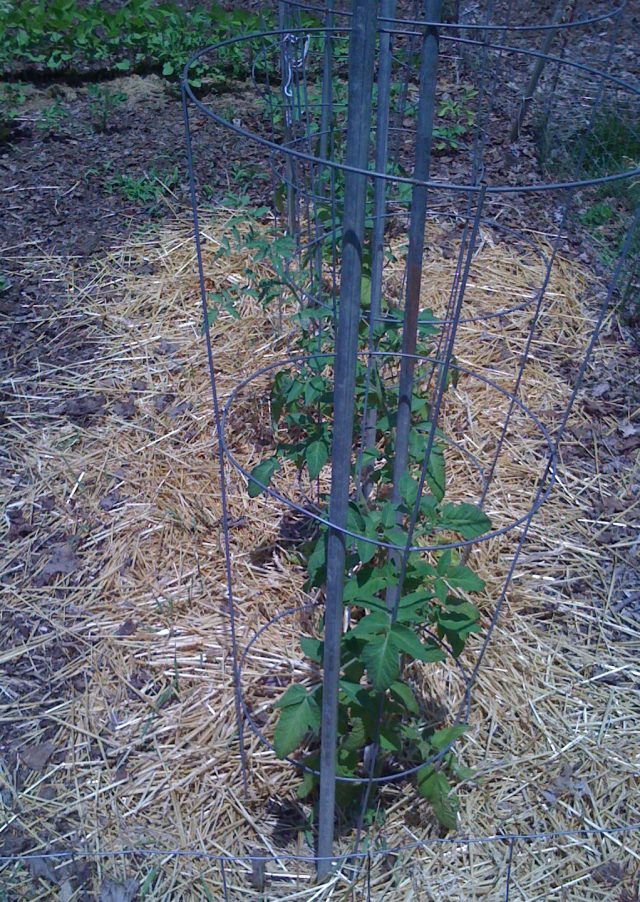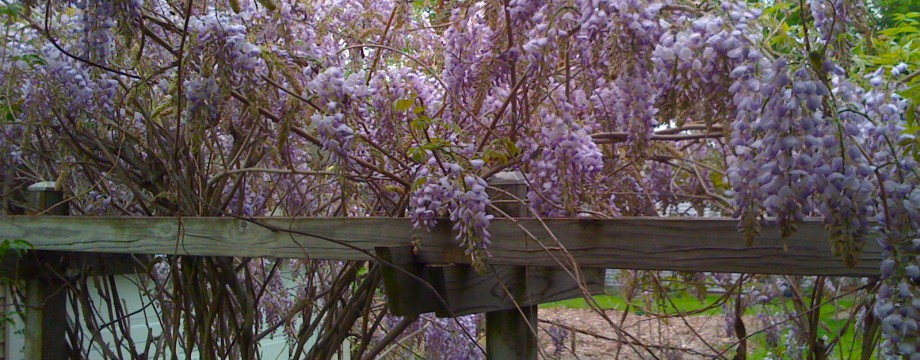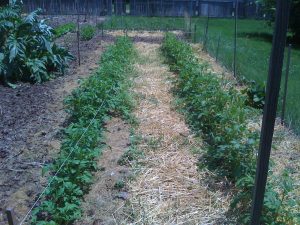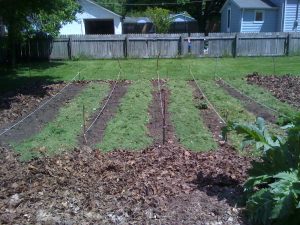Leaves, Straw, or Grass Clippings
A number of years ago, I discovered the benefits of mulching around my tomato plants with straw. This works really well. The straw prevents the soil from eroding during the rain. It also helps the soil retain moisture. What I mainly noticed was that the straw eliminated dirt splatter onto the tomatoes. Ever since, I have been mulching around my tomato plants with straw. A thick enough layer of straw can also cut down on the number of weeds that sprout up. One disadvantage, however, is that straw generally has straw seeds. So what can and does sprout up is straw, which, usually, is pretty easy to pull out.

As I’ve mentioned before, a few years ago I began preparing new garden beds by spreading a thick layer of leaves over the area of lawn that I wanted to convert to a garden. Last spring, I merely moved some of those leaves aside to form the rows in my garden. This spring, however, I wanted a good quantity of leaves to spread around the area where my new blueberry bushes were growing in order to kill the grass between the little bushes. I didn’t want to try to mow around the bushes. So I needed leaves, lots of leaves. I raked up all the leaves from the area in which I was going to plant potatoes and used those leaves around the blueberries.
Because that left bare ground between my potato rows, I mulched those rows with straw. Unfortunately, as you can see, for this larger area, straw does not prevent grass from growing. There are probably enough gaps between the stalks of straw that allow grass seeds to fall through and take hold. Perhaps I did not put down a thick enough layer of straw.
I still like straw around the tomatoes – it makes for a nice clean mulch. Because I use straw this way for relatively small areas – just little circles around the tomatoes – this application of straw mulch works well. But straw does not work well for mulching large areas. Leaving leaves for the areas between rows is the better method. Grass and weed seed still falls on the leaf cover, and grass and weeds still spring up in the leaves. But those weeds are very easy to pull because they are rooting in the leaves rather than thee soil.
As summer progresses, the leaves decompose and I need to continue mulching. So then I use grass clippings. The photo below is from 2010. This weekend I will start using grass clippings in this year’s garden.
In conclusion, I think that leaving leaves between the rows provides the best mulch for weed control, then supplementing that mulch with grass clippings. I will watch my garden this summer to see if how my mulching techniques work.



3 Responses to Mulching Experiments